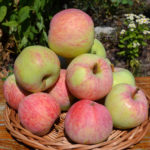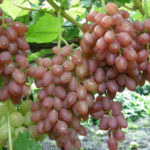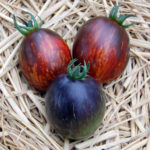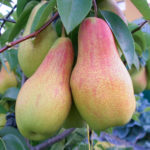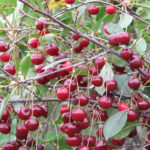Fertilizing tomatoes with boric acid
Tomatoes (tomatoes) are one of the main crops grown both on an industrial scale and in private plots. As you know, the yield of tomatoes depends on many factors - the feeding area, the reaction of the soil solution (acidity or pH), the temperature minimum and the illumination regime, timely watering, etc.
One of the most critical factors is the presence of essential nutrients in the soil, including trace elements. In the context of this article, we will focus on the importance of boron for tomatoes, as well as on how to provide plants with this trace element.
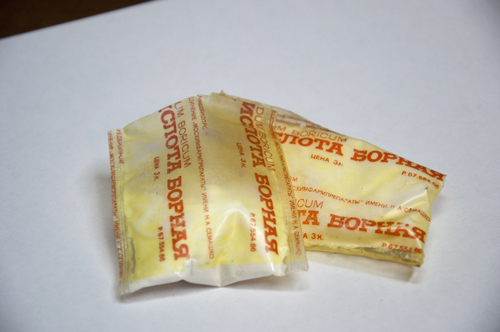
Boron salt content in soils
Boron is not a rare chemical element, however, its concentration in different types of soils varies greatly. The highest percentage of boron salts is observed in salt marshes - the paradox is that this type of soil is not suitable for growing most crops. Chernozems and the so-called chestnut soils are in second place in terms of boron concentration. All other types of soils (red soils, sod-podzolic, peat, sandy, etc.) contain very few boron compounds.
"Boric starvation", oddly enough, is often observed in plants grown on soils sufficiently supplied with boron salts, and there are objective reasons for this. Most of the boron salts in the soil solution are contained in a form inaccessible to plants, and the share of water-soluble compounds is only 8-15% of the total. In addition, the intake of boron salts depends on the weather conditions. For example, during a rainy season, they are washed into the lower layers of the soil and become inaccessible to plants - this is especially true for sandstones and sandy loams. As a rule, most gardeners practice growing tomatoes through seedlings, therefore, such plants develop a superficial root system. Obviously, such tomatoes often show symptoms of "boron starvation". Tomatoes also experience a lack of boron in the dry season, therefore, to solve the problem, it is necessary to carry out foliar feeding of the plants.
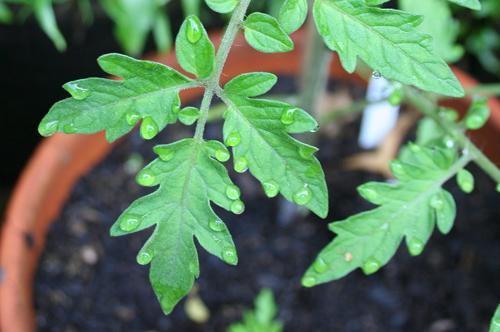
The lack of this trace element is often noted after the addition of lime (liming is practiced on acidic soils in order to correct the pH-value). "Boric starvation" can be triggered by the introduction of overestimated doses of nitrogen fertilizers.
The value of boron for tomato
Boron takes an active part in the processes of photosynthesis, in particular, it promotes the transport of carbohydrates to developing fruits. Boron compounds strengthen the immunity of plants and increase their resistance to various fungal and viral diseases.
In recent years, abnormally hot summers have been observed in many regions, and the temperature "in the sun" often exceeds 50 ° C. Not many people know that at a temperature of 40 ° C, the pollen of tomato flowers becomes sterile, that is, unable to fertilize - this is one of the reasons for shedding the ovaries. Foliar treatment of flowering brushes of tomatoes with boric acid can significantly reduce the negative effect of high temperatures.
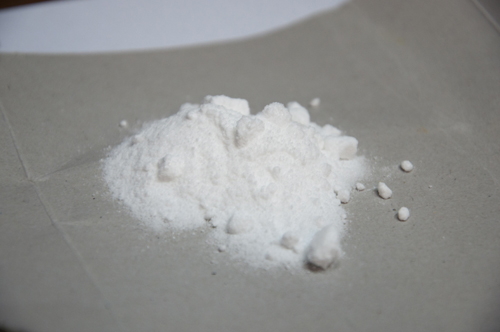
Symptoms of a lack of boron in tomatoes
Currently, there are devices that allow within a few seconds to analyze the cell sap for the supply of nutrients, but the lack of boron can also be determined visually by the following signs:
- unnatural curvature (curling) of the tops of plants and young leaves;
- chlorotic (pale) color of young leaves and their subsequent dying off;
- loss of turgor (leaves lose their elasticity and become brittle);
- darkening of the central vein of the leaf plate (brownish or blackish tint);
- blackening and subsequent dying off of the growth point;
- complete shedding of inflorescences.

Presowing treatment and feeding of tomato plants with boric acid
Boric acid (H3BO3, orthoboric acid) is an inexpensive and rather effective drug used by gardeners as a source of boron for feeding tomatoes. It makes sense to use it already at the stage of preparing seeds for sowing. To draw up a complex solution, it is necessary to prepare half a liter of onion peel decoction and ash extract, add 5 g of sodium bicarbonate (baking soda), 1 g of potassium permanganate (potassium permanganate), 0.5 g of succinic acid and 0.2 grams of boric acid. For pre-sowing treatment, you can use a monopreparation - 0.5 g of boric acid per liter of water. Tomato seeds are kept in one of the solutions for 12-24 hours.
Foliar dressing with boric acid is recommended to be carried out in the budding phase, during flowering, as well as in the initial stage of fruiting. To carry out foliar dressing, a solution is prepared at the rate of 5 g of boric acid per 10 liters of water. The consumption rate of the solution for 1 bush is approximately 50 ml. In the presence of obvious symptoms of "boric starvation", the concentration of the solution is increased to 10 g of boric acid per 10 liters of water, and the consumption rate is adjusted to 70-100 ml.
Only 5 g of boric acid dissolves in 100 ml of water with a temperature of 20 ° C, so the liquid has to be heated to about 40 ° C.
Alternative sources of boron
As an alternative source of boron, gardeners often use borax, a sodium salt of boric acid. Of the new generation products, it is worth paying attention to the so-called boron chelate - a complex complex compound characterized by excellent solubility in cold water. In addition, boron chelate has a unique ability to penetrate cell membranes, as a result of which the efficiency of assimilation of a trace element during the use of the drug increases significantly.
